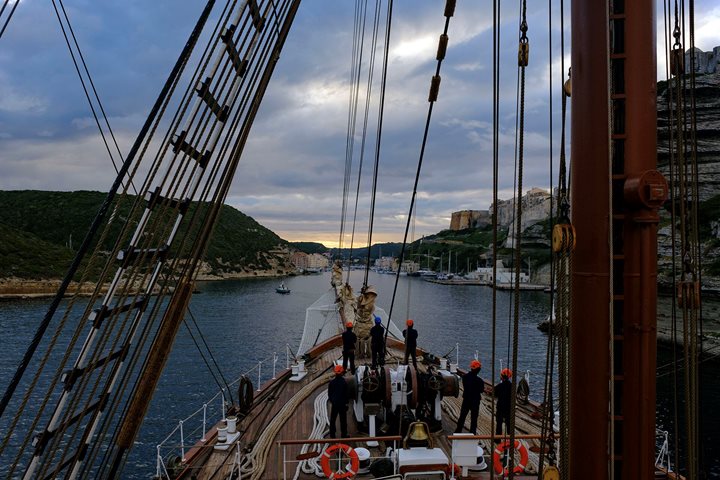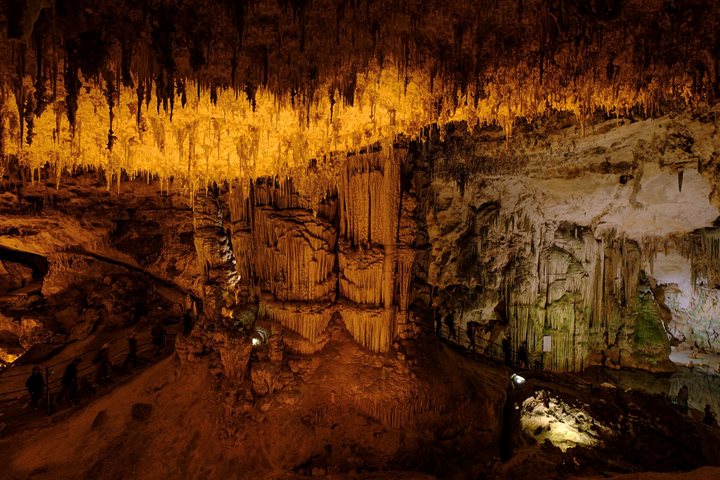Sunrise was at 6:46 a.m. We had a slight wind, but the sea was almost flat calm. The captain called for setting sails at 8:00 a.m. We were doing one knot with a wind speed of five knots. The wind was on our starboard bow from the northeast. The long passage into Mahon (pronounced locally as Mao) on the island of Menorca was beautiful with colorful homes on both sides of the narrow entrance as well as some fish farms in the middle of the channel.
After lunch, we drove to the highest point on the island, “The Bull,” and had a fabulous view of the entire island. Unlike Mallorca and Ibiza, Menorca is very green as the wind from the north brings a great deal of moisture. We could see Mallorca in the distance. At the very top of the mountain is a small church dedicated to the Virgin Mary. The interior walls are covered by what appears to be massive tapestries but are actually oil painted canvases. The convent which adjoins the church is still in use.
After we left the mountain, we visited the archaeological site of the Talalótic culture called Trepucó. There are 1500 such sites scattered throughout Menorca. These people built their homes and distinctive towers with unfinished limestone. The earliest structures date from approximately 1200 BCE, the late Bronze Age. We refer to this culture as prehistoric because they left no written records or inscriptions. The settlements were small, possibly no larger than a few hundred. The archaeological record shows that they were subsistence farmers and raised livestock, grains, and legumes. The site at Trepucó is one of the largest on the island. It was one of the longest inhabited sites from its beginning in 1200 BCE to its rapid abandonment during the Punic Wars, which the Carthaginians fought with the Romans in the 3rd century. Historians do not know the reason for the abandonment, but presumably, warfare was sufficiently disruptive as to make their former way of life untenable.
Terpucó also contains one of the largest of Taula (table) structures built during the late Talalótic period between 500 and 125 BCE. The archaeologist Margaret Murray who excavated here in the 1930s found evidence of fire and different animal bones, suggesting some sort of ritual. We have no knowledge of any religious festivals or rites other than the fire and animal bones that suggest some type of sacrifice. These immense “T” like structures would have required a considerable amount of community cooperation, which suggests a hierarchy of some sort. If one compares these stone structures with those on Sardinia, for example, the contrast is stark. Those on Sardinia show carefully worked stone surfaces and exquisitely cut joints. We do know the Sardinians were very skilled metallurgists, especially skilled in bronze casting. I saw no evidence of such fine work here in Menorca.
After we left Trepucó, we had free time to explore the town. It was a Saturday afternoon, and most shops were closed. Their sidewalk cafes were open, though, and locals were enjoying the weekend. There were a number of interesting churches and an old Capuchin cloister that has been turned into the market. It was a great visit.
We enjoyed conversation and drinks on the Lido Deck as we motored out of the long harbor of Mahon. The evening was capped with a delicious dinner.









